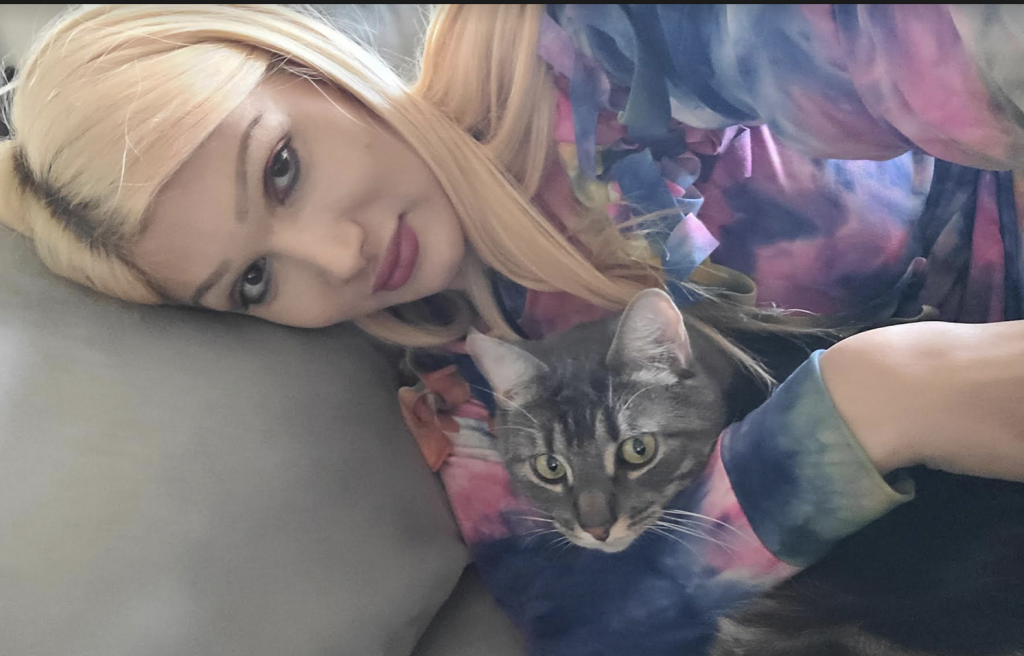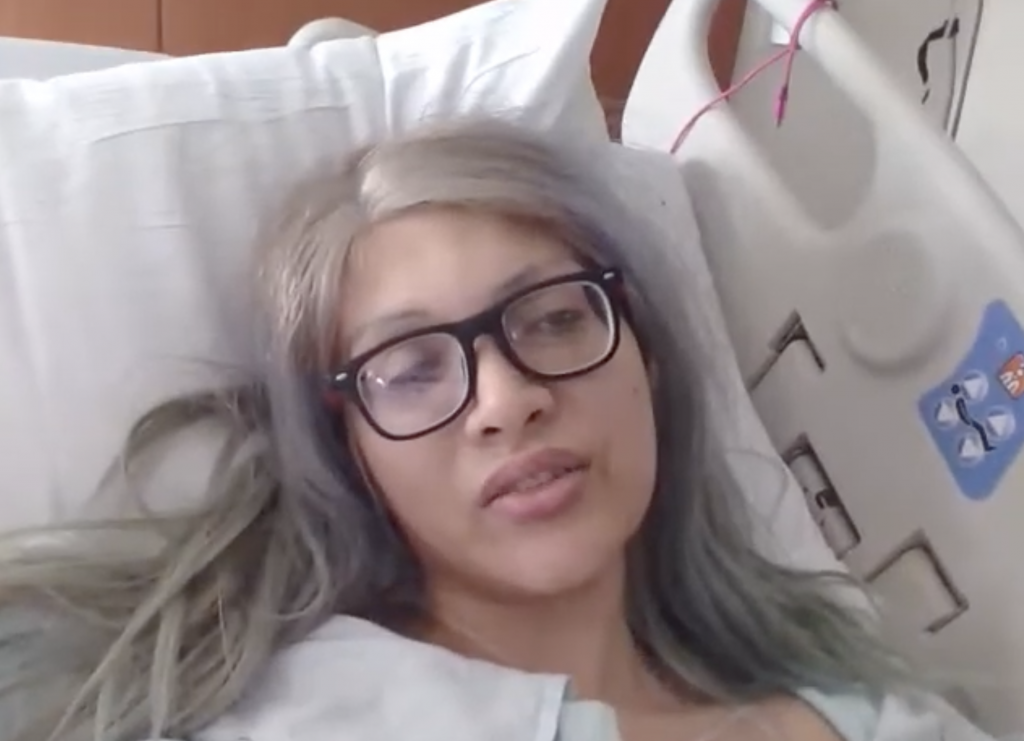I call myself Shape Shifter.
While the name is not my own, I feel it describes me well. I have traversed the darkest reaches of the so-called “gender spectrum” in search for what – who – I was, and transformed myself in the process multiple times.
I can say now that I am a 31-year-old gay male who lived life as a transgender woman for a decade.
I grew up in predominantly Muslim country in Eastern Europe. From the youngest years of my life, I was ‘gender non-conforming,’ and even before I hit puberty I knew I wasn’t like the other boys. But as I got older, I realized that my sexuality and desire to present myself the way I felt most comfortable was not accepted by the society I had been born into. I was rejected both at school and in the home. Bullied by peers, and treated as a burden by my family for my femininity.
My father would tell me I “wasn’t a real man.”
My mother expressed shame over my height and physical attributes.
It doesn’t take long to drown when you’re thrown into a sea of resentment with no lifejacket.
Slowly but surely, I began to hate everything about myself. My “feminine” body and mannerisms were a burden, as was my sexuality. Still, all I could focus on was improving my English with the dream I could leave my country and move to the West.
When I was 20-years-old, that dream became a reality. I moved to the United States to begin graduate school, and for a moment breathed the fresh air of a liberation I’d never before known. I was finally able to grow out my hair and dress in the manner I preferred, and I could be openly gay without fear of persecution.
But that moment was tragically brief.
A question from a well-meaning classmate would put the breaks to the freedom I was enjoying.
“What are your pronouns?”
I was confused, uninitiated. I’d never been exposed to the concepts present in contemporary gender ideology before, and began to research into it like any curious person would. Little did I know at the time, every page I scrolled through and concept I learned was tugging me farther and farther away from the liberation I had just barely begun to enjoy.
Faced with an avalanche of testaments to affirmation and validation, I began to convince myself I was a “straight woman” trapped in a man’s body. After the life I had lived, wrought with such repression and condemnation, it almost made sense.
It explained everything, in fact. The reasons why I never fit in or felt comfortable with my body suddenly became crystal clear. The logic behind it also promised an escape, something I had been desperately searching for my whole life.
I could be free from the homosexuality that I had been shamed for since my earliest years. I could be free from being a “feminine” man. I could be a heterosexual woman. Then I could be accepted, find love, and live a normal life.

In my excitement, I almost immediately began presenting myself as a transgender woman. I distanced myself from my gayness and my maleness. I changed my pronouns and quickly changed my name and legal documents.
But despite my initial feelings I had done the right thing, the escape – the freedom – I sought continued to elude me.
While I had been told while I was growing up that I was too “feminine,” male sexual partners were now telling me I was too “masculine,” and not womanly enough. I decided it must have been because my “wrong body” still needed medical correction.
I was able to get feminizing hormones rather quickly through Fenway Health in Boston, Massachusetts, which only required me to tell them I was living as a woman and “felt” like a girl on the inside. Soon after, I got facial feminization surgery and breast implants.
While my dating pool initially increased, I was told by members of my transgender community that men who were comfortable with my penis were “tranny chasers” who didn’t see me as a real woman. This, coupled with the fact these men often didn’t want anything to do with me out of the bedroom, made me feel like I would never find true love until I had completed all of the surgeries associated with transitioning. My mental health began to deteriorate, and I decided that I needed bottom surgery in order to feel happy.
I ended up getting two letters from mental health professionals at Fenway Health stating that I had gender identity disorder and that I was a good candidate for sex reassignment surgery. At no point was I asked about my childhood trauma, the repression of my sexuality in my home country, or even whether I had any co-morbid mental health concerns. They assumed that my depression and anxiety issues were due to gender identity disorder, and that radical medical intervention would be the solution.
I had my surgery in 2015, and my life has been a living hell since then.
The “neo-vagina” the surgeon had constructed was too tight for comfortable penetrative sex, and I started rapidly loosing depth despite rigorous and painful dilations because my body was treating the tunnel as a wound and was constantly trying to heal itself.
Within a few months, I was back on the operating table to widen the constructed passage. The surgeon blamed me for not dilating enough, though I had followed the instructions he’d given. Even after I left the hospital, I lost one inch of the canal’s depth in the drive from Pennsylvania to Massachusetts as my body continued to treat the surgical creation as a wound that needed to be closed.
Despite all of my efforts, most of which resulted in extreme discomfort during urination, the canal was narrowing once again.
My second revision was done with a different surgeon, one who harvested tissue from my colon in order to add it to the constructed canal. Within one month, the passage had tightened once again and dilation was painful.

By my third revision surgery, I had done so much research that I was begging the surgical team to order certain supplies to keep my passage from closing again. During this surgery, my pelvic bone was shaved down to make the entrance to my hole wider. But after I removed the inflatable stent I had inserted during surgery, I discovered I had developed a colorectal fistula — an abscess-like infection. I had to be scheduled for fistula repair surgery.
The fourth revision to my neo-vagina resulted in the fistula tearing back open.
It was then that I realized no one had known what they were doing. Everything was experimental. All of it was being made up as they went along — and I was nothing more than a guinea pig.
I later discovered the surgeon, Dr. Salgado, who had done my last three revisions was let go from the University of Miami for taking pictures of his patients while they were under anesthesia and posting them to Instagram.
Currently, my neo-vagina is only 1 inch deep. I have spent thousands of dollars flying across the United States trying to find a surgeon with a solution, but I have been told that due to the amount of revisions I have had, any attempts would likely result in me having to wear a colostomy bag.
I realize now that in my search for freedom… I have mutilated myself.
I lost my perfectly healthy genitals. I lost my 20s. I lost family and friends. I lost my chance at a comfortable, fulfilling sex life.
My insurance, however, has paid out over $250,000 to surgeons and hospitals for the various hack-jobs that had been performed on my body. Everyone made out like a bandit, yet I had nothing to show for it. Not one of the surgeons who lined their pockets off of my trauma has ever called to check up on me, ask about my quality of life, or see if I was still alive.
In 2018, I made my first YouTube video discussing my complications. At the time, I was still living as a “woman,” and I had thought I would document my thoughts and experiences as I believed they were rare.
But after I uploaded my first videos, I had many trans-identified individuals write me and explain they were in similar positions. I realized there were a lot of people with complications, but they weren’t included in any official statistics or data.
Just as my journey had started, it would end with research.
I realized hormone treatments were not even FDA approved for treatment of gender dysphoria. That there were no studies proving that hormone replacement therapy was safe in the long run. And, just as I had thought, all of the surgeries were experimental.
But more than anything else, I realized I was not a “woman.” I was a gay man who had been sold a lie.
After everything I have been through. I realize medical transition destroyed my mental and physical health, and lowered my quality of life substantially.
At 31-years-old, I have osteoporosis and scoliosis from the impact of hormone replacement therapy. In fact, my testosterone was so low that in January I began taking it to improve my bone density. My T-levels increasing resulted in a slew of extreme emotions towards my transition. It was as though a part of my brain that had been dormant was activated, and I was suddenly wrought with the full depth of the realization that I had made a mistake I could never take back.
I was at my breaking point, and experienced suicidal ideations. Entering therapy helped me realize I had heavy childhood trauma that should have been addressed prior to ever allowing me to proceed with an irreversible medical intervention. I discovered I had borderline personality disorder as well as body dysmorphia, and no matter how far I took my surgical modifications, I would have never felt “at home” in my body.
Since I have come out as a detransitioner, I have spoken to so many people like me whose stories are important and deserve to be heard. In fact, I believe the detransitioner community will be growing exponentially in the coming years. It is tragic to think about the parents who will one day realize they ruined their child’s body by jumping to “affirm” how they perceived themselves at one moment in time — kids who may have just been gay or gender-nonconforming like myself.
I have also met criticism from those who still subscribe to gender ideology who claim that me speaking on my experiences will take away “life saving” care from trans people.
But I got that care. And where is my life?
Sometimes I feel like I am in a nightmare I will wake up from. My eyes will open and I will have my original body and have my whole life ahead of me to make decisions. Since beginning testosterone, I also sometimes get ‘phantom penis’ symptoms which are extremely traumatic.
Medical detransitioning is even more experimental than medical transitioning, but I am not rushing into anything anymore. One thing is for sure, I will never again identify as transgender woman — a label that not only endorses questionable medical experimentation, but also has a negative impact on the rights and dignity of females.
My idea of freedom is different now than it was those years ago, but the challenges are, ironically, the same.
In addition to the criticism from those who champion gender ideology, I also get flak for having long hair and nails but identifying as a man. Yet again I am being criticized for not fitting certain rigid definitions of masculinity — the very thing that set me down this path in the first place.
But I am done trying to ‘correct’ myself to please others.
I am done shifting shapes.
Reduxx is your independent source of pro-woman, pro-child safeguarding news and commentary. We’re 100% reader-funded! Support our mission by joining our Patreon, or consider making a one-time donation.

